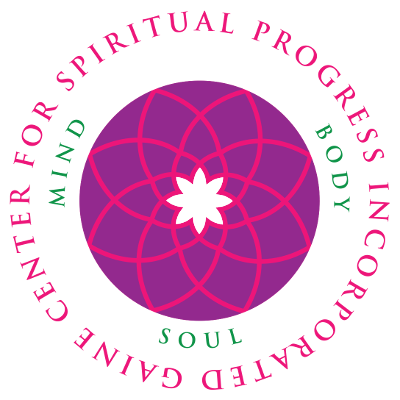June 11, 2018
From Role Mates to Soul Mates to Whole Mates
In the fall of 2018 I will be offering Ageless 4 which is Connection - Re-Connection in the Ageless Living series. Relationship connectivity is critical to maitaining vibrant, vital complete health so that you have the choice to live in the highest vibration in your body for as long as you choose. Here is an excerpt from Barbara Marx Hubbard and Marc Gafni's new book to be released soon!
Joining Genes to Joining Genius: Role Mates, Soul Mates, and Whole Mates
by Dr. Marc Gafni & Dr. Kristina Kincaid
The emergence of a new whole that is more than the sum of its parts is a core feature of erotic synergy. This is true on all levels of reality — including, of course, human relationships. Let’s now turn to see how this erotic property of synergy plays out in our human world of relationship. On the human level as well, we are attracted to form relationships by the allurement of becoming more whole. We are allured by wholeness. That is the evolutionary dynamic at play in relationship.
The evolution of relationship is an expression of the evolution of Eros, or what we might call the evolution of intimacy. The drive to not only join genes but to join hearts and ultimately to join genius is the trajectory of the evolution of Eros in human relationship. “Role mate” is about joining genes, “soul mate” is about joining hearts, and “whole mate” is about joining genius.[1] Intimacy evolves from role mate to soul mate to whole mate. At each level, a new whole is created.
On the physical level, we are moved to join genes and create babies. The relationship that defines couples that come together to join genes and create family is what we will refer to as role mates. A “role mate” means simply that each party in the relationship is responsible for a specific set of roles. Historically, men virtually always played the role of protector and provider while women played the role of nurturer and homemaker. The natural upper-body strength of men and the simple fact that women bear children and make milk for breastfeeding had at least something to do with this historical arrangement. The goal of the role-mate relationship was survival and continuity.
These are both very big deals. Survival of the individual, the family, and the species are not flatland evolutionary mechanisms that can be explained by science. Rather, the drive to survive at all levels is an erotic interior. It is not in any way a scientific given that all beings do everything in their power to survive. This is rather an interior aspect of Eros that is a natural expression of the erotic universe. From amoebas to human beings, all of existence is utterly committed, with all of its energy, to survival.
In many texts of science, however, a creeping dogma is evident that reduces survival to a natural mechanism of a materialist universe. Interior dimensions of reality are regularly dismissed as evolutionarily insignificant because they do not have what is called “survival value.” For example, interiors like beauty, music, values, and the search for meaning are regularly dismissed by science as insignificant in guiding evolution because they are not thought to contribute to physical survival.
This is a strange and wrong assumption on two levels. First, these interiors absolutely contribute to survival. But let’s focus on the second wrong assumption, which is that survival is an exterior function that is a given in a materialist flatland universe. It is not. The desire to survive is just that — an interior desire that is built into the deepest fabric of reality, all the way up and all the way down. The human desire to survive is not an expression of our brute nature but of something far more noble, allusive, and refined. It is an expression of self-love. Self-love is the deep knowing that my existence is worthy and therefore worth fighting for, at almost all costs. Survival may then be seen as the exterior expression of a deeper erotic interior. This expression of love is then extended to one’s partner and family and eventually to one’s clan, tribe, or people. This is the evolution of love. Role mates come together to ensure that survival. Role mates create a whole that is more than the sum of their parts: they create a family.
A new level of relationship is born when there is a soul-mate connection. Working together for survival and continuity is an insufficient basis for this relationship. Tevye sings to Goldie in the 1963 Broadway musical Fiddler on the Roof, “Do you love me?” She does not understand the question. She responds, “For twenty-five years I’ve washed your clothes, I’ve darned your socks . . .” She goes through the litany of her role-mate actions. Is that not love, she asks? But in the mid-1960s, the evolution of intimacy went from role mate to soul mate. Love evolved, and love began to mean communication and intimacy. Bestselling books were written about different love languages, differences between men’s and women’s communication styles, and practices to “get the love you want.”
Soul mates were focused not on shared survival but on looking deeply into each other’s eyes. Emotional intimacy, radical sharing of wounds, healing, and mutual personal fulfillment are the hallmarks of soul-mate relationships. The classic expression of the soul-mate relationship in culture was the 1970 hit movie Love Story. It represented the evolutionary movement from role mate to soul mate. The protagonists, Jenny and Oliver, come together, not merely to survive but also to heal each other’s wounds. In that healing, there is a new wholeness.
The goal of role-mate relationship is to survive, which, as we have seen, is a form of self-love, which extends to partner and family. The goal of soul-mate relationship is to transcend loneliness through radical joining with the emotional heart of another. The evolution from role mate to soul mate is the move from joining genes to joining hearts. Soul mates create a deeper whole than role mates do because the soul-mate relationship includes a new depth of communication and intimacy.
The great poet of soul-mate relationships is Rumi. He speaks of heart:
I have come to drag you out of your self and take you in my heart.
I have come to bring out the beauty
you never knew you had
and lift you like a prayer to the sky.
Clearly, Eros never wants to leave the soul-mate relationship behind. But soul mates, in all of their splendor, are not the summit of relationship evolution. There is yet another level — what we believe to be the next level of relationship in the story of the evolution of Eros. This new level of relationship is the evolutionary movement from soul mate to whole mate. Whole-mate relationships include and transcend the best of role-mate and soul-mate relationships. We call it “whole mate” because it is the deepest possible relational whole that one can aspire to at this moment in history.
At some point — for many couples at the leading edge of innovation and transformation — personal fulfillment as the attractor in relationships was no longer satisfying. Soul-mate relationship in its classic form remained a necessary prerequisite for relationship, but it was found to be no longer sufficient. Couples wanted not only to join genes and hearts but also to join genius. They wanted not only to look deeply into each other’s eyes but also to look together at a shared horizon. Shared purpose became central in these relationships. Relationships felt nonerotic without shared vision and values that could be better fulfilled together than apart. This is a new form of love, a new whole, to which previous relationship levels have been leading. In whole-mate relationships, couples seek to join genius to serve the larger whole. The more that love is evolved in the couple, the wider the whole that they seek to serve. In its highest expression, a whole-mate relationship becomes an evolutionary relationship, a relationship in which both parties are living in an evolutionary context. They experience their relationship as serving the healing and transformation of all that is.
The classic image of this evolutionary whole-mate relationship is Neo and Trinity in the cult movie The Matrix. They are deep soul mates. At the moment of her death, being held by Neo, Trinity remembers the depth of their kiss. And yet they are also whole mates. Unlike Jenny and Oliver in Love Story, Neo and Trinity have great shared purpose. They are evolutionary partners. In the deathbed scene of Love Story, Jenny demands that Oliver not feel guilty about her not seeing Paris. Personal wounds, trauma, and emotion remain the center of their relationship. In marked contrast, in the moment of Trinity’s death, after poignantly speaking of the quivering beauty of Neo’s kiss as central to her life, she demands that Neo go forward and fulfill the shared quest that has been the great Eros of their life together. For Trinity, the soul-mate relationship is not left behind, but it is not the end of the story. Whole-mate relationship includes and transcends soul mates.
[1] We are delighted to share that there is a major forthcoming opus on this topic, a two-volume work by Marc Gafni and Barbara Marx Hubbard, titled From Role Mate to Soul Mate to Whole Mate: The Next Level in the Evolution of Relationships.
<< Previous Post Next Post >>


